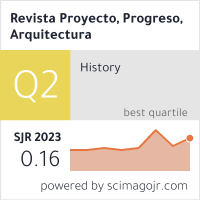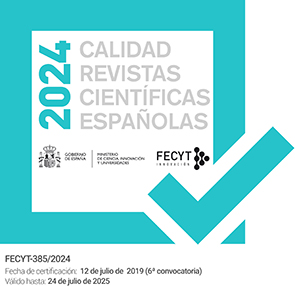CONSTRUYENDO UNA UTOPIE AUTRE [AMAZING ARCHIGRAM! - 50 AÑOS DE ZOOM!/ ZZZZRRTT!/ THUD!/ BLAAM!] / Building a utopie autre [Amazing Archigram! - 50 years of Zoom!/ Zzzzrrtt!/ Thud!/ Blaam!]
DOI:
https://doi.org/10.12795/ppa.2014.i11.07Keywords:
Amazing Archigram 4, The Independent Group, Reyner Banham, utopia, ciencia ficción / science fictionAbstract
RESUMEN Desde su tímida aparición en 1961, y fundamentalmente a partir de su consolidación definitiva a mediados de la misma década, Archigram, revista y grupo, ha pasado a ser un sine-qua-non del panorama utópico y de las historias de las agrupaciones arquitectónicas. El punto de inflexión en su consolidación como un elemento indispensable de la historia de la arquitectura del siglo XX, sería, en cualquier caso, la aparición en 1964 de Amazing Archigram!, el cuarto número de la revista, dedicado a la ciencia ficción. Con su imaginería mecánica y espacial, y su estética de comic book americano, el “Zoom Issue” tendría un papel crucial en la conformación de la imagen y el propio ethos de Archigram. Por una parte, el número catapultaría su marca hacia un panorama internacional. Por otra, su potencia visual, formal y transgresora, unida a una aparente coherencia en el mensaje, instaló en el ojo colectivo de la arquitectura la idea de Archigram no sólo como una revista, sino como un estudio de arquitectura con una agenda común. Sin embargo, “Amazing Archigram” también instauró la visión del grupo como un conjunto de “provocateurs”, y de su arquitectura como perteneciente al terreno de la ciencia ficción, algo muy alejado de la intención de sus autores, cuyas propuestas, visionarias o no, se orientaban hacia el muy real objetivo de dar forma arquitectónica a esa “realitas ludens” que impregnaba la propia realidad de los 60.
SUMMARY Since its timid first appearance in 1961, and fundamentally after their ultimate consolidation in the mid of the same decade, Archigram, both magazine and group, became a sine-qua-non of the utopian scene and of the history of architectural teams in general. The turning point in their encoding as an indispensable element in the history of XXth Century architecture would be, however, the publication, in 1964, of Amazing Archigram!, the fourth issue of the magazine devoted to science fiction. With its mechanical and space age imagery, and its American comic book aesthetics, the “Zoom Issue” would have a prominent role in conforming the public image and the very public perception of Archigram’s ethos. On the one hand, the issue would catapult their brand to the international scene. On the other, its visual punch, and the transgressive consistency of its message, installed in the collective eye of architecture the idea of Archigram not just as a magazine, but as an architectural office with a common agenda. However, “Amazing Archigram” also established the vision of the team as a group of “provocateurs”, and the regard of their architecture as something belonging in the world of science fiction, which was far from being the intent of their authors, whose proposals, visionary or else, certainly helped shape that “realitas ludens” that impregnated the very architectural reality of the 1960s.
Downloads
References
Hogar y Arquitectura. Revista Bimestral de la Obra Sindical del Hogar. Nº 72. 1967. Madrid: Ediciones y Publicaciones Populares. 1955-1977.
Banham, Reyner: “The New Brutalism”. The Architectural Review. Londres, diciembre de 1955.
Banham, Reyner: “The Atavism of the Short-Distance Mini-Cyclist”. Living Arts nº 3, Londres: ICA, 1964.
Banham, Reyner: Megastructure: Urban Futures of the Recent Past, Londres: Thames and Hudson, 1976.
Churchill, Winston: Thoughts and Adventures: Amidst These Storms. Londres: Thornton Butterworth, 1932.
Colomina, Beatriz (Ed.): Clip, Stamp, Fold: the radical architecture of Little Magazines, 196X to 197X. Barcelona: Actar, 2010.
Cook, Peter et al. (Eds.): Archigram Paper 1. Londres: Autopublicado, mayo de 1961.
Cook, Peter et al. (Eds.): Archigram 2. Londres: Autopublicado, 1962.
Cook, Peter et al. (Eds.): Archigram 3: Expendability. Londres: Autopublicado, 1963.
Cook, Peter et al. (Eds.): Amazing Archigram 4: Zoom Issue. Londres: Autopublicado, mayo de 1964.
Cook, Peter (Ed.): Archigram. New York: Praeger Publishers, 1973.
Dahinden, Justus: Urban Structures for the Future. Londres: Pall Mall Press, 1972.
Luckhurst, Roger: The angle between two walls: the fiction of J.G. Ballard. Liverpool: Liverpool Univ. Press, 1997.
Lus Arana, Luis Miguel: Futurópolis: El Cómic y la Construcción Transmediática de la Ciudad del Futuro. Director: Mariano González Presencio. Universidad de Navarra, ETSA, 2013.
Lus Arana, Luis Miguel; Olóriz, Clara: "Amazing Archigram! -An Interview with Sir Peter Cook". En MAS Context. "Narrative". Diciembre 2013, Nº 20. Chicago.
Morris, Sally; Hallwood, Jan: Living With Eagles: Marcus Morris, Priest and Publisher. Cambridge: The Lutterworth Press, 1987.
Pilgrim, Michael: "Dan’s Back, with Extra Muscle". The Observer, domingo 30 de junio de 2002.
Sadler, Simon: Archigram: Architecture without Architecture. Cambridge, Mass.; MIT Press, 2005.
Sadler, Simon: The Situationist City. Cambridge, Mass.: MIT Press, 1998.
Seelhorst, Mary: The Best of Popular Mechanics 1902 to 2002. New York: Hearst Communications, 2002.
Smithson, Allison; Smithson Peter: “But Today we Collect ads”. En Ark. Noviembre 1956, Nº 18. Londres: Royal College of Art.
Steiner, Hadas: “Off the Map”. En Hughes, Jonathan; Sadler, Simon (Eds.): Non-plan: essays on freedom participation and change in modern architecture and urbanism. Boston: Architectural Press, 1999.
Steiner, Hadas A.: Beyond Archigram: The Structure of Circulation. New York: Routledge, 2009.
Walters, David: “The architect as superhero: Archigram and the text of serious comics”. En Architronic: the electronic journal of architecture. 1994, Vol. 3, Nº 2.
Downloads
Published
How to Cite
Issue
Section
License
Las ediciones impresa y electrónica de esta Revista son editadas por el Secretariado de Publicaciones de la Universidad de Sevilla, siendo necesario citar la procedencia en cualquier reproducción parcial o total.
Salvo indicación contraria, todos los contenidos de la edición electrónica se distribuyen bajo una licencia de uso y distribución “Creative Commons Atribución-NoComercial-SinDerivar 4.0 Internacional” ![]() . Puede consultar desde aquí la versión informativa y el texto legal de la licencia. Esta circunstancia ha de hacerse constar expresamente de esta forma cuando sea necesario.
. Puede consultar desde aquí la versión informativa y el texto legal de la licencia. Esta circunstancia ha de hacerse constar expresamente de esta forma cuando sea necesario.
Los autores/as que publiquen en esta revista aceptan las siguientes condiciones:
- Los autores/as conservan los derechos de autor y ceden a la revista el derecho de la primera publicación, con el trabajo registrado con la licencia de atribución de Creative Commons, que permite a terceros utilizar lo publicado siempre que mencionen la autoría del trabajo y a la primera publicación en esta revista.
- Los autores/as pueden realizar otros acuerdos contractuales independientes y adicionales para la distribución no exclusiva de la versión del artículo publicado en esta revista (p. ej., incluirlo en un repositorio institucional o publicarlo en un libro) siempre que indiquen claramente que el trabajo se publicó por primera vez en esta revista.
- Se permite y recomienda a los autores/as a publicar su trabajo en Internet (por ejemplo en páginas institucionales o personales) antes y durante el proceso de revisión y publicación, ya que puede conducir a intercambios productivos y a una mayor y más rápida difusión del trabajo publicado (vea The Effect of Open Access).









